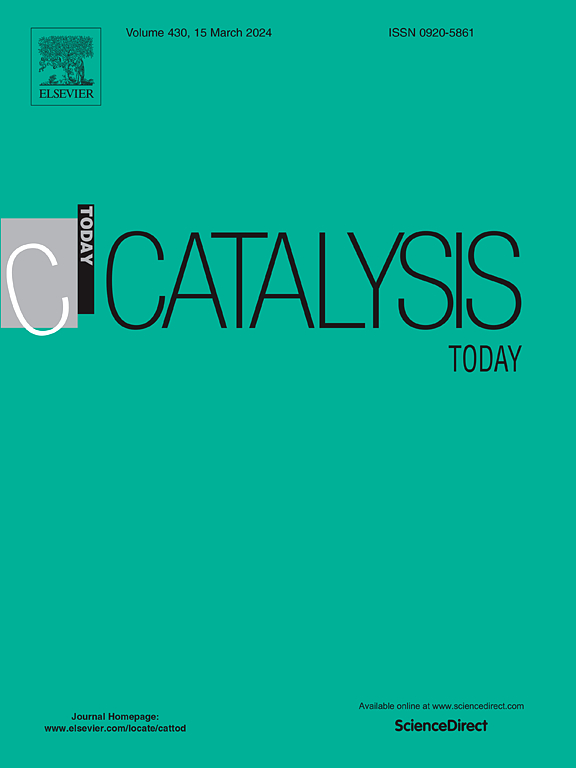Boron nitride supported copper single atom catalyst for nitrate reduction reaction
IF 5.2
2区 化学
Q1 CHEMISTRY, APPLIED
引用次数: 0
Abstract
Recently, the electrochemical nitrate reduction reaction (NO3RR) has been interested to enable an artificial nitrogen cycle in ammonia (NH3) production and decarbonize the current ammonia industry. In this study, a series of Cu supported on the porous boron nitride (BN) catalysts were successfully prepared using a simple pyrolysis method with various Cu loadings and B/N ratios for the NO3RR. The electrocatalytic performance of CuBN was evaluated using a self-designed H-cell with different NO3- concentrations of electrolyte. It was demonstrated that the formation of Cu single atoms and the interaction between Cu and BN significantly influence NH3 productivity in the NO3RR. The 1 wt% CuBN catalyst with a B/N ratio of 1:36 exhibited superior NH3 productivity of 3184.9 μg/mgcat/h and a selectivity of above 95 %, along with outstanding stability. By utilizing X-ray absorption spectroscopy and other advanced techniques, this catalyst was found to possess the highest amount of active Cu single atoms, which had a strong interaction with the BN support. In addition, though a comparison with Cu/Al2O3, the impact of Lewis acidity on the NO3RR was also elucidated.
硝酸还原反应用氮化硼负载铜单原子催化剂
近年来,电化学硝酸还原反应(NO3RR)引起了人们的兴趣,以实现氨(NH3)生产中的人工氮循环,并使目前的氨工业脱碳。在本研究中,采用简单的热解方法,成功制备了一系列Cu负载在多孔氮化硼(BN)催化剂上,并对NO3RR进行了不同的Cu负载和B/N比。采用自行设计的不同NO3-浓度的氢电池对CuBN的电催化性能进行了评价。结果表明,Cu单原子的形成和Cu与BN的相互作用显著影响NO3RR中NH3的产率。1 wt% CuBN催化剂在B/N比为1:36的条件下,NH3产率为3184.9 μg/mgcat/h,选择性为95 %以上,稳定性好。利用x射线吸收光谱和其他先进技术,发现该催化剂具有最多的活性Cu单原子,与BN载体有很强的相互作用。此外,通过与Cu/Al2O3的比较,也阐明了Lewis酸度对NO3RR的影响。
本文章由计算机程序翻译,如有差异,请以英文原文为准。
求助全文
约1分钟内获得全文
求助全文
来源期刊

Catalysis Today
化学-工程:化工
CiteScore
11.50
自引率
3.80%
发文量
573
审稿时长
2.9 months
期刊介绍:
Catalysis Today focuses on the rapid publication of original invited papers devoted to currently important topics in catalysis and related subjects. The journal only publishes special issues (Proposing a Catalysis Today Special Issue), each of which is supervised by Guest Editors who recruit individual papers and oversee the peer review process. Catalysis Today offers researchers in the field of catalysis in-depth overviews of topical issues.
Both fundamental and applied aspects of catalysis are covered. Subjects such as catalysis of immobilized organometallic and biocatalytic systems are welcome. Subjects related to catalysis such as experimental techniques, adsorption, process technology, synthesis, in situ characterization, computational, theoretical modeling, imaging and others are included if there is a clear relationship to catalysis.
 求助内容:
求助内容: 应助结果提醒方式:
应助结果提醒方式:


